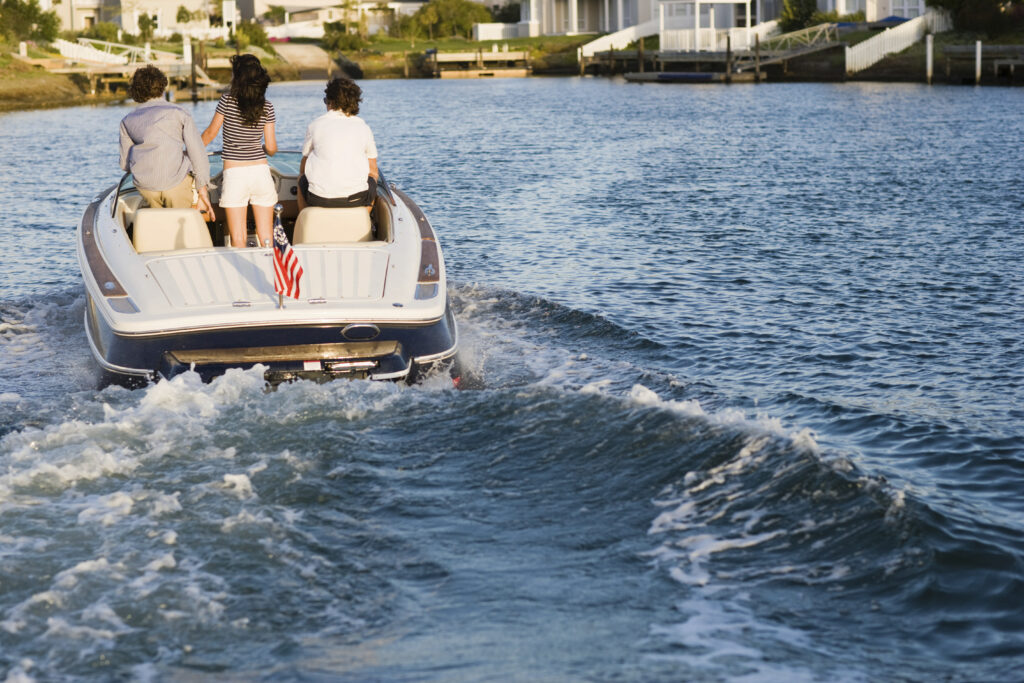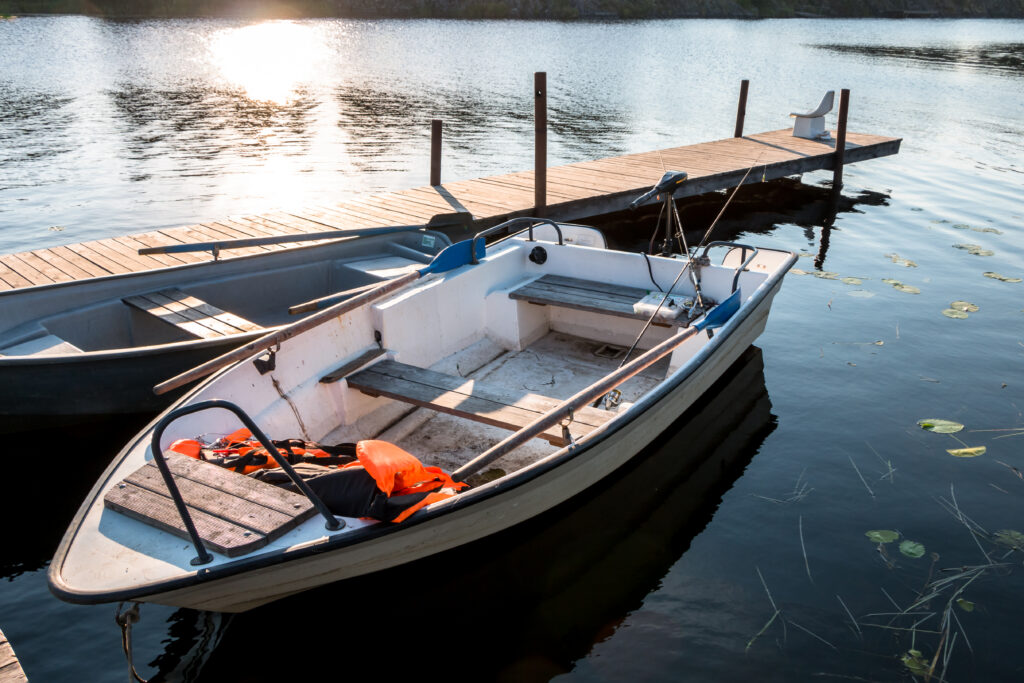The difference between a smoothly running boat and an engine failure that can get pricey might come down to a small fan-shaped component. An impeller serves as a significant part in boat motors and plays a vital role in the engine’s cooling system. This simple component rotates at speeds matching the engine’s RPM to maintain optimal operating temperatures.
Your outboard motor’s impeller works within the cooling system and pumps water to prevent overheating. The impeller’s significance lies in its ability to ensure proper water circulation throughout the engine. Engines can quickly overheat without a working impeller, which leads to severe damage.
Marine experts recommend replacing this component annually, regardless of its apparent condition. Some suggest a replacement after 100 – 200 hours of use, or what is recommended by your Manufacturer, marine technician, and environmental conditions.
Boat owners can avoid expensive repairs and unexpected breakdowns by knowing their outboard impeller and spotting signs of wear. This piece will explore everything you need to know about boat impellers – from warning signs of failure to proper maintenance steps.
What Is an Outboard Impeller and Where Is It Located?
The impeller works as the heart of a boat engine’s water pump system. This small yet vital part creates pressure that powers the cooling system. The boat engine maintains optimal temperatures because of this crucial component.
What is an impeller on an outboard motor?
The impeller’s design features a shaft-driven rubber component with flexible vanes or blades that rotate inside a circular housing. These vanes spin and flex to create suction that pulls water into the pump and forces it out. This action moves energy from the motor to the water and creates the flow needed for cooling. The structure has a round core with six or more vanes attached to it.
Rubber or nitrile materials make up most impellers. These materials provide flexibility and help with lubrication. The design lets the part work well as water flows constantly through the engine.
How the impeller fits into the cooling system
The impeller functions like a heart pumping blood in the cooling system. It rotates to draw water from lakes, rivers, or oceans and moves it through specific cooling passages in the engine. The water takes heat from engine parts before flowing out through the exhaust or a dedicated outlet.
The engine needs this circulation process. Without proper cooling, outboard engines can overheat quickly and suffer severe damage. The engine’s temperature control during long runs depends on the impeller’s performance.
Common locations in outboard and inboard engines
You’ll find impellers in two main spots based on the engine type:
- In outboard engines and stern drives, the impeller rests just above the lower unit, close to the cavitation plate. This placement helps it pull water from nearby and push it up to cool the engine.
- In inboard engines, seawater pumps mount on the engine’s front.
- These pumps draw water from the lower unit intake or straight from hull intake points.
The impeller sits next to the water intake and drive shaft inside a pump housing in an outboard’s lower unit. This location helps it draw cool water and push it through the engine’s cooling channels efficiently.
How an Outboard Impeller Works to Cool Your Engine
Outboard engines use a surprisingly simple yet effective cooling method to prevent overheating. Most outboard motors use a “raw water cooling system” instead of air cooling or closed-loop systems found in car engines.
Water intake and the circulation process
The cooling cycle starts from water intake ports on the lower unit’s sides, positioned just above the propeller. These openings let water enter the system as the boat moves. The water flows to the pump housing where the impeller sits.
The impeller’s rotation creates suction that pulls water through intake channels and sends it to the powerhead. Similar to a heart in a circulatory system, it pushes water through a tube. The water flows around the engine block and through cooling jackets – channels designed to absorb heat from engine components.
The water exits through the exhaust system or a dedicated outlet after absorbing the engine’s heat. Boaters recognise this as the “tell-tale” stream (also called the “pee stream”) that shows the cooling system works properly.
Why is impeller rotation critical for cooling
The impeller creates the pressure needed to maintain a steady water flow throughout the engine. The rubber vanes contact the housing liner to create an effective seal at lower speeds. These flexible vanes bend backward slightly as engine RPM increases, which maintains proper flow whatever the engine speed.
This steady circulation stops hot spots from forming in the engine. Temperature rises faster in areas exposed to intense combustion heat without this continuous flow.
What happens when the impeller fails
An impeller failure causes immediate and severe effects:
- Water circulation becomes inadequate or stops, and the engine temperature rises faster
- You notice overheating first at idle or low speeds
- Modern engines switch to “survival mode” by cutting power or shutting down
- Running the engine with poor cooling can warp components, melt exhaust parts, blow head gaskets, or seize the engine
The impeller can deteriorate dangerously even with partial failure or restricted flow that generates enough heat to cause further damage.
Warning Signs Your Outboard Impeller Needs Replacing
Boat owners can save thousands in repairs by spotting failing outboard impeller signs early. These warning signals usually show up slowly, which gives owners time to fix problems before major damage happens.
Overheating engine symptoms
Engine overheating is the clearest sign that your impeller might be failing. Your temperature gauge might show higher readings than usual or suddenly jump into the danger zone when your cooling system isn’t working right. Most modern outboards come equipped with temperature sensors and alarms that let you know when things get too hot. Your engine can suffer catastrophic damage within minutes if you keep running it while it’s overheating.
Reduced water flow from the telltale
The “telltale” (or “pee hole”) shows you that water moves through your engine properly. A weak, spotty, or non-existent stream means your impeller isn’t pumping water effectively. Some flow reduction at idle speed is normal, but you should shut down the engine right away if there’s no flow at all. Your motor might pump less water at idle, yet work perfectly fine at higher RPMs.
Unusual noises from the water pump
Your lower unit might make grinding, rattling, or high-pitched squealing sounds if your impeller has problems. Damaged impeller blades hitting against the housing typically cause these noises. Motors that sit unused for long periods often develop these issues.
Visual signs of wear or missing fins
Look for cracks, rot, warping, and broken or missing blades when you check your impeller. The rubber parts will break down naturally as time passes and become brittle enough to break.
How to Replace an Outboard Impeller (Step-by-Step)
Outboard impeller replacement needs careful steps and close attention to detail. Your Outboard will run better if you replace the impeller after every 100 hours of operation or annually.
Removing the lower unit safely
A work stand must hold your outboard securely to prevent any accidents during maintenance. Start by taking off the anode and mounting bolts around the lower unit. Many boat owners miss the hidden bolts under the anti-ventilation plate – make sure you find them all. The shift linkage disconnects after you remove the plastic disk that covers the connection point. The lower unit should come off with gentle wiggling instead of too much force.
Inspecting the impeller and housing
The impeller blades need a good look for any cracks, missing pieces, or signs that they’ve gotten brittle. Look at the housing for grooves or scratches that could reduce performance. A quick test with your fingernail across the wear plate tells you if there’s damage – any groove means you need a replacement. The gaskets and O-rings should also show no signs of wear.
Installing the new impeller with proper alignment
Marine grease goes on the new impeller’s keyway before it slides onto the driveshaft. The impeller must sit flat against the wear plate. Match the key with the shaft’s indentation and press down evenly. The vanes will position correctly when you turn the driveshaft clockwise while pushing down on the housing.
Reassembling and testing the system
Put grease on the mounting bolts and driveshaft splines – but only on the sides. The driveshaft, shift shaft, and water tube need perfect alignment during reinstallation. A quick engine test after assembly will show proper water flow through the telltale.
Conclusion
Your boat’s cooling system relies on the outboard impeller as its beating heart. This small rubber part uses flexible vanes that create water circulation to keep engines at optimal temperatures. Regular impeller maintenance stands as one of the most crucial steps boat owners should take.
Your engine needs immediate attention when the impeller starts failing. Watch for signs like engine overheating, weak telltale streams, and strange grinding noises from the lower unit. These warning signs shouldn’t be ignored – they can turn a simple part replacement into a repair bill that gets pricey fast.
Experts say you should swap out impellers every three to five years or around every 200 hours of use, whatever their condition looks like. Rubber breaks down naturally and becomes brittle over time. It can fail even when it looks fine on the outside. Getting ahead of problems with early replacement costs is nowhere near as much as fixing a complete breakdown.
Many boat owners can handle the replacement process themselves. Success comes from careful lower unit removal, good component checks, proper installation with correct arrangement, and methodical reassembly. These steps help your cooling system work right.
A solid grasp of impeller function, knowing when to replace it, and staying on top of maintenance will make your engine last longer. This small investment protects your bigger investment in the boat. A properly working impeller lets you enjoy your time on the water instead of dealing with surprise breakdowns.
Keep your outboard running smoothly with quality impellers from Victory Parts. Browse our range and contact our friendly team for expert advice to keep your engine performing at its best.
FAQs
Q1. How often should I replace my outboard impeller?
It’s recommended to replace your outboard impeller every 200 hours of operation or every three to five years, whichever comes first. Some manufacturers may suggest more frequent replacements, so it’s best to consult your owner’s manual for specific guidance.
Q2. What are the signs that my outboard impeller needs replacing?
Key indicators include engine overheating, reduced water flow from the telltale (“pee stream”), unusual noises from the water pump, and visible wear or missing fins on the impeller. If you notice any of these signs, it’s time to inspect and potentially replace your impeller.
Q3. Can I replace the outboard impeller myself?
Yes, many boat owners can replace the impeller themselves. The process involves removing the lower unit, inspecting the impeller and housing, installing the new impeller with proper alignment, and reassembling the unit. However, if you’re not comfortable with the procedure, it’s best to consult a professional.
Q4. What happens if I don’t replace a worn-out impeller?
Failing to replace a worn-out impeller can lead to engine overheating, which may cause severe damage such as warped components, melted exhaust parts, blown head gaskets, or even complete engine seizure. Regular impeller maintenance is crucial to prevent these costly issues.
Q5. Where is the impeller located in my outboard motor?
In outboard engines, the impeller is typically located just above the lower unit, near the cavitation plate. It’s positioned next to the water intake and drive shaft within a pump housing. This location allows it to efficiently draw in cool water and circulate it through the engine’s cooling system.







